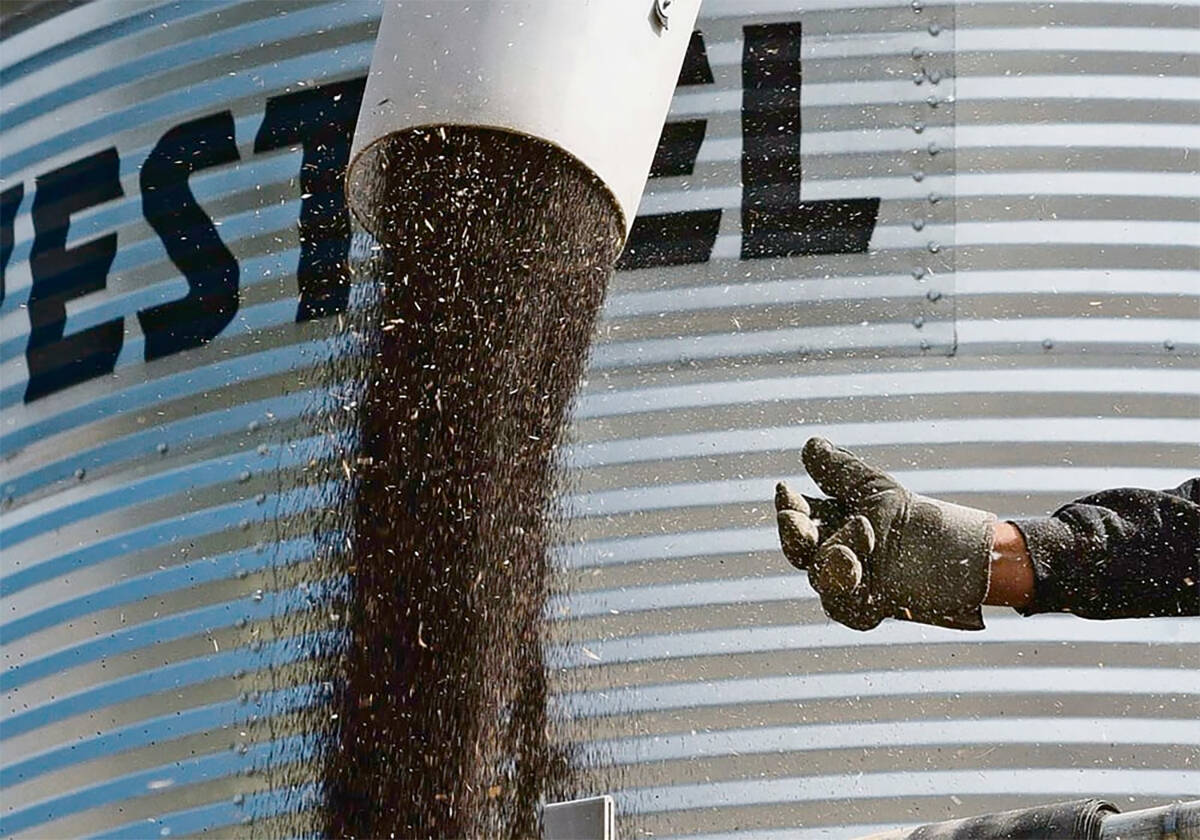Harvest management is farmers’ last chance to mitigate problems with fusarium head blight, says a re-search plant pathologist with Alberta Agriculture.
Michael Harding said diseases are at their peak just before harvest, which makes now the best time to scout fields and determine problem areas so that they can be harvested, trucked and stored separately from healthy crops.
“This is also the best time to evaluate how the management practices used in the season performed, noting which areas will be high risk for the next two or three years,” said Harding.
Read Also

Farmers urged to be grain-safe this fall
Working around grain bins comes with risk, from farmers falling to drowning in grain: Experts have five tips to help avoid grain-related accidents this harvest.
An integrated management program is the best way to deal with fusarium head blight, but that should be done earlier in the season, he said.
Such a plan includes field selection, rotation, variety selection, seed testing and treatment, irrigation management and well-timed fungicide applications.
However, steps can also be taken at harvest.
“Because fusarium head blight is a little bit of a different organism or a bigger problem than just yield loss, there are things we can do to minimize those effects,” said Harding.
Heavily infected areas can be harvested and stored separately to minimize the chances of the remaining parts of the field being downgraded.
Producers can also turn the wind up on the combine enough so that the lighter, shrivelled fusarium-damaged kernels can blow out of the back of the combine and not end up in the bin.
“These aren’t really what you’d call ‘disease management strategies,’ because you’re actually returning fusarium-infected material into the land, but they can help reduce the downgrading and amount of micro-toxin in a sample,” Harding said.
“If it’s a field with no history of fusarium head blight, it could help the organism become more established in the field and become more established next year. But fusarium graminearum is mostly a residue-born organism, so the amount you’re returning, blowing it out the back, is just a drop in the bucket, almost irrelevant. You may not want to blow seeds out the back. Instead, just remove as much trash stubble as possible.”
Harding said direct seeding is a beneficial practice for cereal producers, but it also has its disadvantages.
“Whenever you make a management decision, it’s a double-edged sword. The more stubble or trash you leave in the field, the more disease potential carries over, in particular for these residue-born diseases, like fusarium graminearum and cereal leaf spot diseases.”
Harding recommends using as many disease management strategies as possible. These include:
- Good crop rotations.
- Leaving two or three years between susceptible varieties.
- Avoiding corn in rotation for small grain cereals.
- Having seeds tested and treated.
- Increasing seeding rates so that the crop flowers at different times.
- Avoiding irrigation during flowering and applying fungicide when needed.
“Using a combination of as many strategies as you can will help you manage the disease,” said Harding.
The environment plays a major role in both the level of disease prevalence and in how rapidly it worsens and spreads from field to field.
“If it’s very dry at flowering, we escape many problems,” he said.
“If it’s very wet, we tend to see a lot more problems. Wind is also a factor that can drive wind-born spore dispersal from field to field. If harvested early enough, the crop can be used for silage, which also mitigates fusarium head blight damage.”














